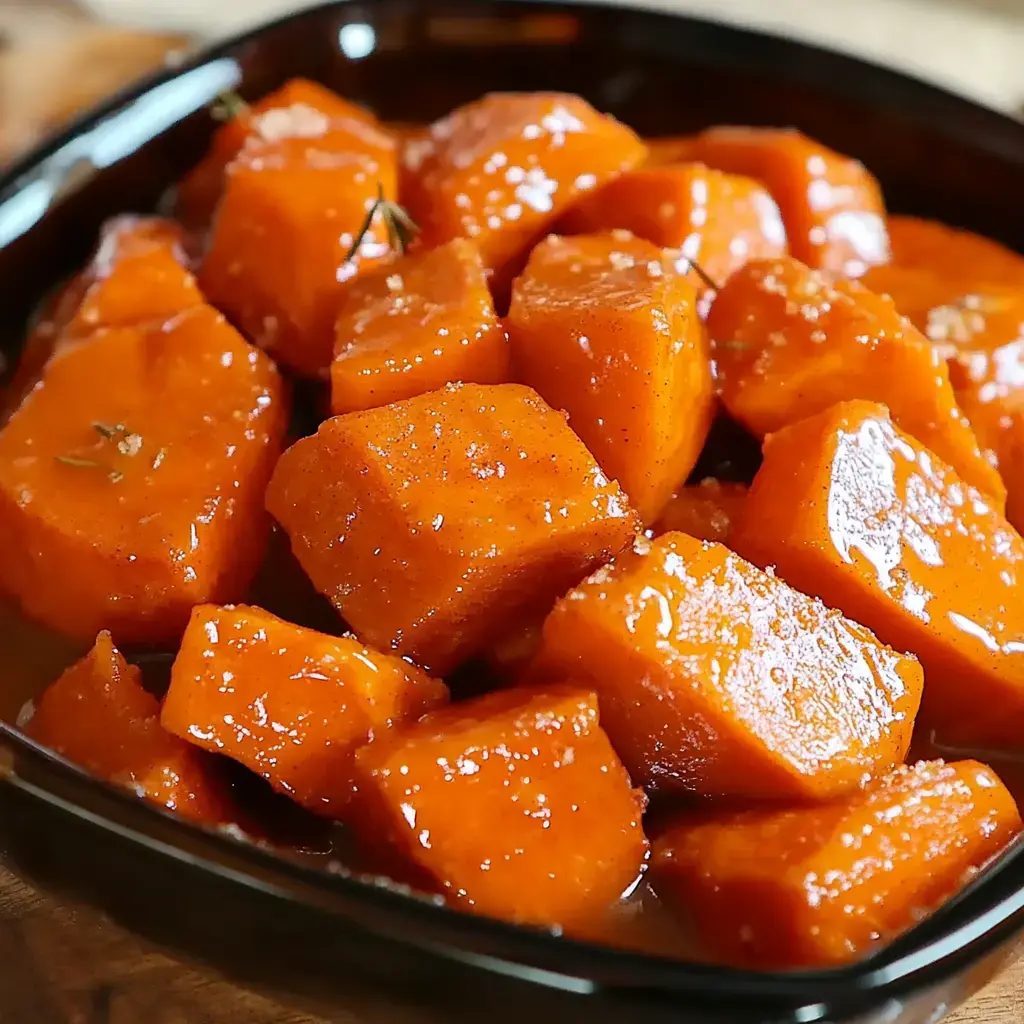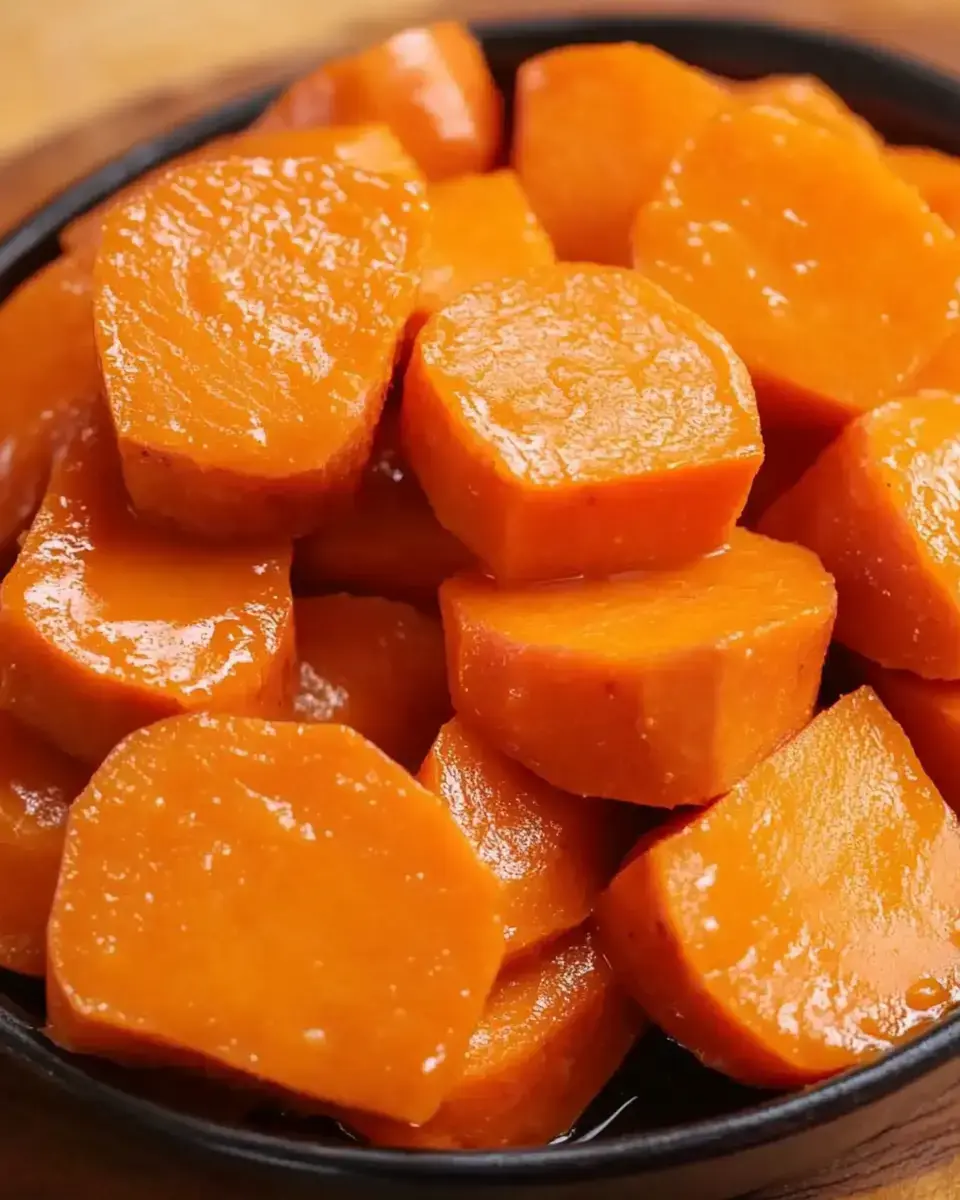 Pin it
Pin it
This candied yams recipe represents five generations of my family's holiday traditions, perfected through countless Thanksgivings and Christmas dinners. After inheriting my grandmother's handwritten recipe card and spending years tweaking the technique, I discovered that the magic lies in stovetop preparation rather than baking. The controlled heat allows you to develop a rich, glossy sauce while keeping the sweet potatoes perfectly tender. What started as my great-grandmother's simple dish has evolved into what my friends now call 'candied gold' - a testament to the power of passing down and improving family recipes.
Understanding Your Ingredients
- Sweet Potatoes:
- Garnet or Jewel variety preferred
- Deep orange flesh, reddish-brown skin
- 8-10 ounces each size
- Firm and unblemished
- Similar sizing for even cooking
- Premium Butter:
- Unsalted European-style only
- Minimum 82% butterfat content
- Plugrá or Kerrygold recommended
- Room temperature for blending
- Key Sweeteners:
- Dark brown sugar for molasses notes
- Fresh orange juice (never concentrate)
- Natural pectin for thickening
- Fresh Spices:
- Whole cinnamon sticks
- Whole nutmeg for grating
- Fresh ginger root
- Grind just before using
- Quality Matters:
- Even-sized potatoes
- Premium butter brands
- Freshly ground spices
- Pure orange juice
The Complete Setup
Beyond the basic ingredients, success relies heavily on proper equipment and preparation. You'll need a heavy-bottomed 12-inch skillet with straight sides at least 2.5 inches deep - I use an enameled cast iron pan that retains heat beautifully. A sharp 8-inch chef's knife ensures clean cuts, while a heavy-duty vegetable peeler with a horizontal blade makes quick work of the thick sweet potato skin. Keep a candy thermometer handy to monitor your sauce temperature, maintaining it between 230-240°F for the perfect consistency. Essential tools include a heat-resistant silicone spatula for gentle stirring, a microplane for spices, and a heavy, tight-fitting lid that prevents moisture loss during cooking.
The Art of Perfect Execution
- Temperature Control
- Begin with room temperature ingredients - sweet potatoes and butter need exactly 2 hours on counter. This ensures even cooking and proper sauce development.
- Perfect Slicing
- Cut potatoes into precise 1-inch rounds using a sharp knife. Uniformity is non-negotiable here for even cooking and presentation.
- Pan Preparation
- Heat pan over medium-low for 3-5 minutes before introducing any ingredients. The pan should be hot but not smoking.
- Creating the Base
- Melt butter slowly and deliberately, watching for even melting without browning. Add both sugars, stirring constantly for 4-5 minutes until completely dissolved with no graininess.
- Liquid Integration
- Stream in orange juice slowly while whisking continuously. This prevents crystallization and ensures smooth sauce development.
- Potato Placement
- Arrange potato slices in a single layer whenever possible. Only overlap if absolutely necessary for space constraints.
- Temperature Management
- Maintain gentle simmer with small bubbles around edges. Never allow vigorous boiling. Baste every 5 minutes, carefully flip at 15-minute mark.
- Final Reduction
- For sauce finishing, swirl pan gently instead of stirring. Watch for moment sauce coats and clings to slices perfectly.
Advanced Techniques
For an elevated version, try these professional techniques I've learned over the years: Score each potato slice in a crosshatch pattern before cooking to help them absorb more glaze. Monitor the sauce consistency using the cold plate test - place a small plate in the freezer, then drop a bit of sauce on it; it should form a thick syrup that slowly runs when tilted. Consider adding a splash of bourbon or rum during the final cooking phase, allowing the alcohol to cook off while leaving complex caramel notes. For special occasions, I finish the dish with a brûléed sugar crust using a kitchen torch, creating a delicate crackly top that contrasts beautifully with the tender sweet potatoes beneath.
 Pin it
Pin it
Creative Adaptations
While the classic version holds a special place in my heart, I've developed several variations that honor the original while offering something new. A chai-spiced version incorporates cardamom, star anise, and black peppercorns into the glaze. For a tropical twist, replace orange juice with fresh pineapple juice and add toasted coconut as a garnish. During fall, I often add a mixture of dried cranberries and toasted pecans in the final minutes of cooking, their tart and nutty flavors complementing the sweet potatoes beautifully. For special dietary needs, I've successfully created a vegan version using coconut oil and coconut cream instead of butter, though the sauce requires longer reduction to achieve the right consistency.
Service and Storage Mastery
Presentation and storage deserve as much attention as the cooking process. Serve the yams in a pre-warmed, shallow ceramic dish that holds heat well and shows off the glossy glaze. If making ahead, slightly undercook the sweet potatoes and cool them in their sauce uncovered. Store in a glass container with a tight-fitting lid, never plastic, which can affect the flavor. To reheat, transfer to a heavy-bottomed pan and warm over low heat, adding a splash of warm heavy cream to revive the sauce. Gently stir in a figure-eight motion until heated through. For next-day service, consider slicing the reheated potatoes on a bias and arranging them in a spiral pattern, then reducing the sauce separately until thick before pouring it over top. This dish pairs beautifully with roasted turkey, ham, or pork, and any leftovers can be transformed into a decadent bread pudding or morning hash.
Frequently Asked Questions
- → What's the difference between yams and sweet potatoes?
Most orange ones in stores are actually sweet potatoes, even when labeled as yams. Either work great in this recipe.
- → Why pre-boil them?
It helps them cook evenly. If you skip this step, the outside might burn before the inside is done.
- → Can I make these ahead?
Make them a day ahead and reheat slowly with a splash of water. The sauce might need a quick boil to thicken up again.
- → My sauce won't thicken?
Keep it boiling and be patient. It'll suddenly start getting syrupy. Just watch so it doesn't burn.
- → Too sweet for me - what can I do?
Cut the sugar back to 3/4 cup and use fresh orange juice. You can always add more sugar later.
Conclusion
A classic holiday side dish featuring sweet potatoes cooked in a luscious orange and brown sugar sauce. Simple preparation and delightful flavors make this a must-have for festive meals.
